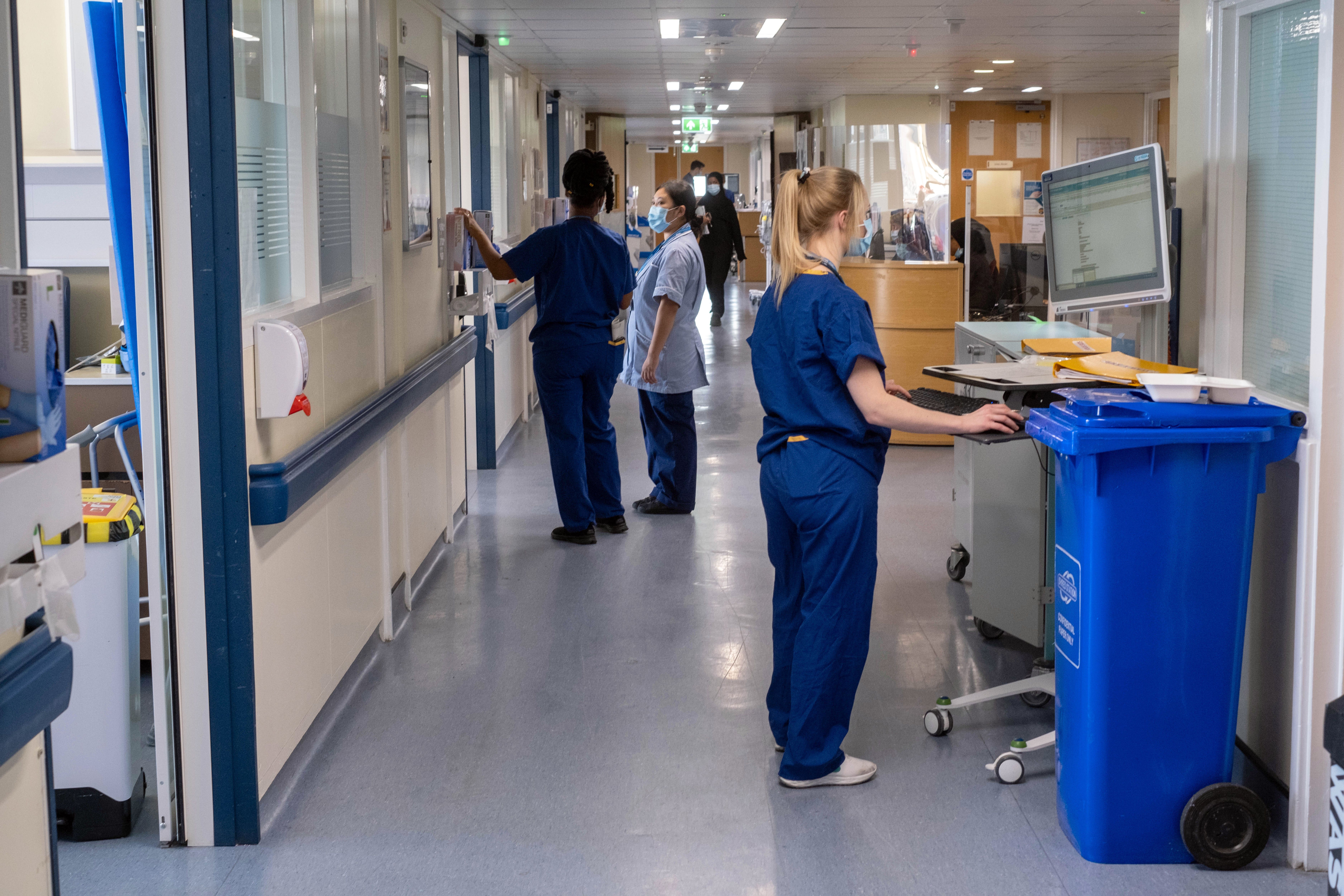NHS waiting lists rise for first time in seven months
An estimated 7.57 million treatments were waiting to be carried out at the end of April, relating to 6.33 million patients.

The overall NHS waiting list in England has risen for the first time in seven months, new figures have revealed.
An estimated 7.57 million treatments were waiting to be carried out at the end of April, relating to 6.33 million patients – up slightly from 7.54 million treatments and 6.29 million patients at the end of March, NHS England said.
NHS waiting lists have been a major talking point for political leaders in the run up to July’s General Election.
Rishi Sunak vowed to tackle the number in January 2023, when it stood at 7.21 million.
The list hit a record high in September, with 7.77 million treatments and 6.50 million patients.
During a Sky News interview on Wednesday, the Prime Minister admitted: “We’ve not made as much progress on cutting waiting lists as I would have liked.”
Daisy Cooper, health spokesperson for the Liberal Democrats, called on Mr Sunak “to apologise to the public for his failure to get NHS waiting lists down instead of ducking responsibility”.
“The Prime Minister getting booed by the public over soaring waiting lists last night shows just how angry people are with his record of failure,” she added.
Sir Keir Starmer vowed that one of the first steps of a Labour government would be to bring down waiting lists by creating 40,000 new appointments per week.
Shadow health secretary Wes Streeting said: “This has blown a hole in Rishi Sunak’s claim that the NHS has turned a corner.
“He promised to cut waiting lists, but they are 350,000 longer today than when he became Prime Minister.
“He can’t blame NHS staff – there were no strikes last month yet waiting lists still rose. The blame lies solely with the Conservatives.”
The figures also showed 5,013 patients in England had been waiting more than 18 months to start routine treatment at the end of April, up from 4,770 in March.
This is despite NHS England and the Government setting an ambition to eliminate all waits of more than 18 months by April 2023, excluding exceptionally complex cases or patients who choose to wait longer.
Some 50,397 patients had been waiting more than 65 weeks to start treatment at the end of April, up from 48,968 in March.
The target to eliminate all waits of more than 65 weeks is now September 2024, having previously been March 2024.
Patients in England waiting more than 52 weeks to start routine hospital treatment fell to 302,589 in April from 309,300 at the end of March.
The Government and NHS England have set the ambition of eliminating all waits of more than a year by March 2025.
Excuses, vague promises and unambitious levels of investment will not get patients the care they need
Patricia Marquis, executive director of the Royal College of Nursing (RCN), said “there will be no place to hide for the next government” when it comes to bringing waiting lists down.
“Excuses, vague promises and unambitious levels of investment will not get patients the care they need,” she added. “Politicians with their eyes on Number 10 need to wake up to that fact.”
Tim Gardner, assistant director of policy at think tank the Health Foundation, said: “With both Labour and the Conservatives promising big improvements in NHS waiting times, today’s figures are a stark reminder of the scale of the challenge facing the next government.”
He added that while there has been “some progress” in recent months “there is still a huge mountain to climb”.
Professor Vivien Lees, vice president of the Royal College of Surgeons of England, also warned that the “NHS won’t stand a chance of cutting waiting times without significant additional investment”.
Saffron Cordery, deputy chief executive of NHS Providers, said: “Trust leaders and their teams are working flat out to ensure no patient waits longer than they need to receive care, but this increasingly feels like an uphill battle.”
She added that “trust leaders know they need to go further and faster for patients” and called on the next government to “work with the NHS to create a health service fit for the future”.
Rory Deighton, director of the NHS Confederation’s acute network, said: “It is disappointing to see that waiting lists have risen for the first time since October despite the health service managing to increase productivity to above pre-pandemic levels.
“But the rise in productivity is testament to the hard work and planning of NHS leaders and their teams who have been having to manage the pressure of rising demand and ongoing industrial action.”
It comes as junior doctors prepare for another strike in their long-running dispute with the Government over pay.
They will walk out from June 27 until July 2, just days before the General Election.
Elsewhere, the figures showed the number of people waiting more than 12 hours in A&E departments in England from a decision to admit to actually being admitted was 42,555 in May, up slightly from 42,078 in April.
The number waiting at least four hours from the decision to admit to admission also increased, from 134,344 to 138,770.
Some 74.0% of patients in England were seen within four hours in A&Es last month, down from 74.4% in April.
The NHS recovery plan set a target of March this year for 76% of patients attending A&E to be admitted, transferred or discharged within four hours.
Professor Sir Stephen Powis, NHS national medical director, said: “As these figures show, demand for NHS services across the country remains high.
“May was a record month for urgent and emergency services, with the highest number of A&E attendances as well as being the busiest May for the most urgent ambulance call-outs, while staff delivered a record number of elective appointments for April.”
Bookmark popover
Removed from bookmarks